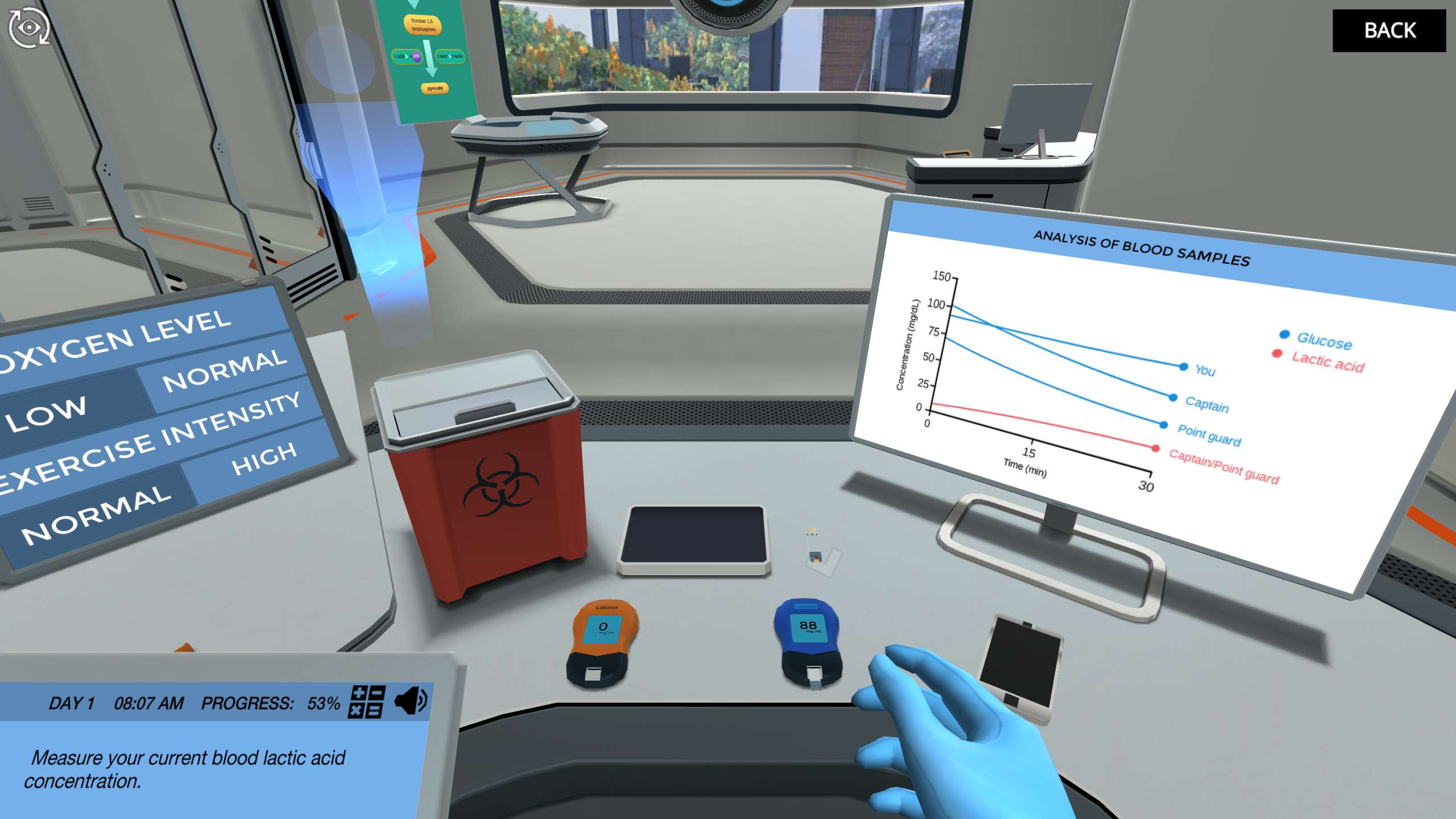Heading 1
Heading 2
Heading 3
Heading 4
Heading 5
Heading 6
Lorem ipsum dolor sit amet, consectetur adipiscing elit, sed do eiusmod tempor incididunt ut labore et dolore magna aliqua. Ut enim ad minim veniam, quis nostrud exercitation ullamco laboris nisi ut aliquip ex ea commodo consequat. Duis aute irure dolor in reprehenderit in voluptate velit esse cillum dolore eu fugiat nulla pariatur.
Block quote
Ordered list
- Item 1
- Item 2
- Item 3
Unordered list
- Item A
- Item B
- Item C
Bold text
Emphasis
Superscript
Subscript
About This Simulation
Help local basketball players understand how the food they eat gets converted to energy through cellular respiration. Use a mouse model to find out what effect exercise intensity has on oxygen and glucose consumption.
Learning Objectives
- Analyze blood glucose and lactic acid concentrations of athletes before and after exercise
- Outline the relationship between the cell, mitochondria and cellular respiration
- Compare aerobic and anaerobic cellular respiration
- Understand the role of glycolysis, the Krebs cycle and the electron transport chain in generating ATP
- Experiment on oxygen consumption in mice at various exercise intensities
About This Simulation
Lab Techniques
- Respirometry
- Measure and analyze blood glucose and lactic acid concentrations
Related Standards
- HS-LS1-2, HS-LS1-7, HS-LS2-3
- Unit 3: Cellular Energetics
- 8.2 Cell respiration
- 8.1 Metabolism
Learn More About This Simulation
What does it mean to work up an appetite? In this simulation, you will learn how humans metabolize glucose through aerobic and anaerobic respiration. You will learn about the three stages of cellular respiration: glycolysis, the Krebs cycle and the electron transport chain.
Evaluate cellular respiration through exercise
You will begin by outlining the different stages of cellular respiration and study how they relate to the cell and its organelles.Then you will identify the important products of glycolysis, the Krebs cycle and the electron transport chain. As you follow the process, you will see how the cell’s main energy carrier, ATP, is produced from glucose. Finally, you will apply what you have learned about cellular respiration in a number of experiments where you will find out what effect exercise intensity has on oxygen and glucose consumption using a mouse model.
Respirometry and blood sample analysis
Next, you will measure cellular respiration by analyzing the blood glucose and lactic acid concentrations of basketball players during a game. This data will be compared to experimental exercise data collected using a mouse model and respirometry.
The experimental portion of this simulation is supplemented by an overview of the central steps of glycolysis, phosphorylation and the Krebs cycle and mitochondria using 3D visualizations and interactive feedback.
Help athletes perform during exercise
Experiment using a mouse model to understand the role of glucose, lactic acid and oxygen during exercise. Apply your knowledge from mouse experiments and of glycolysis, the Krebs cycle and the electron transport chain to help basketball players perform their best during their game.
Boost STEM Pass Rates
Boost Learning with Fun
75% of students show high engagement and improved grades with Labster
Discover Simulations That Match Your Syllabus
Easily bolster your learning objectives with relevant, interactive content
Place Students in the Shoes of Real Scientists
Practice a lab procedure or visualize theory through narrative-driven scenarios


For Science Programs Providing a Learning Advantage
FAQs
Find answers to frequently asked questions.
Heading 1
Heading 2
Heading 3
Heading 4
Heading 5
Heading 6
Lorem ipsum dolor sit amet, consectetur adipiscing elit, sed do eiusmod tempor incididunt ut labore et dolore magna aliqua. Ut enim ad minim veniam, quis nostrud exercitation ullamco laboris nisi ut aliquip ex ea commodo consequat. Duis aute irure dolor in reprehenderit in voluptate velit esse cillum dolore eu fugiat nulla pariatur.
Block quote
Ordered list
- Item 1
- Item 2
- Item 3
Unordered list
- Item A
- Item B
- Item C
Bold text
Emphasis
Superscript
Subscript
Labster can be integrated within a school's LMS (Learning Management System), and students can access it like any other assignment in their LMS. If your Institution does not choose an LMS integration, students will log in to Labster's Course Manager once they have an account created. Your institution will decide the access method during the sales process.
Labster is available for purchase by instructors, faculty, and administrators at education institutions. Purchasing our starter package, Labster Explorer, can be done using a credit card if you are located in the USA, Canada, or Mexico. If you are outside of North America or are choosing a higher plan, please speak with a Labster sales representative. Compare plans.
Labster simulations are created by real scientists and designed with unparalleled interactivity. Unlike point and click competitors, Labster simulations immerse students and encourage mastery through active learning.
Labster supports a wide range of courses at the high school and university level across fields in biology, chemistry and physics. Some simulations mimic lab procedures with high fidelity to train foundational skills, while others are meant to bring theory to life through interactive scenarios.


















